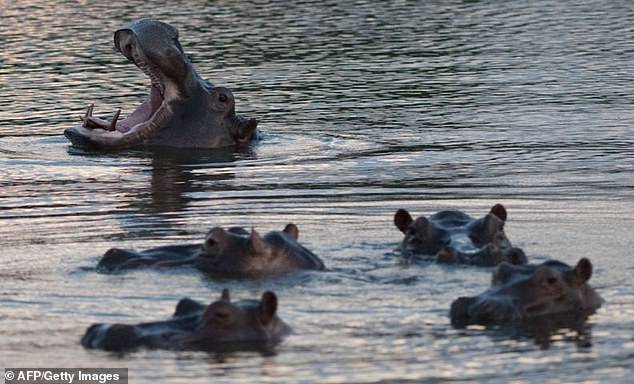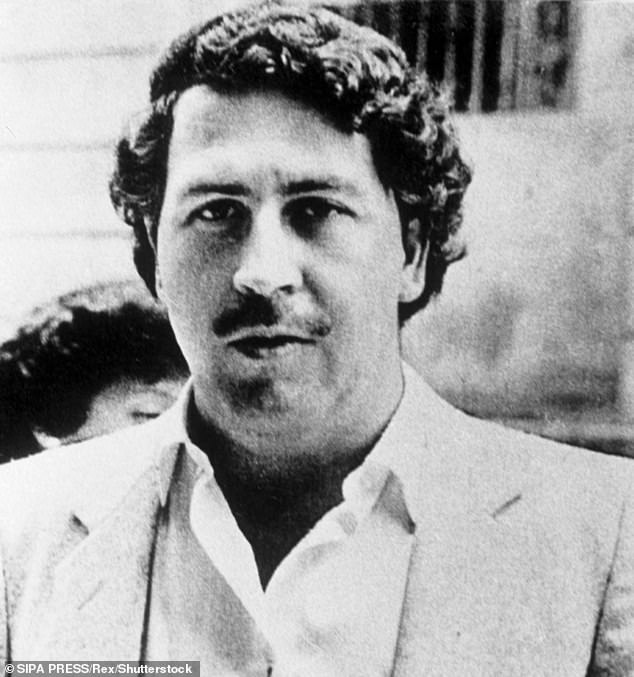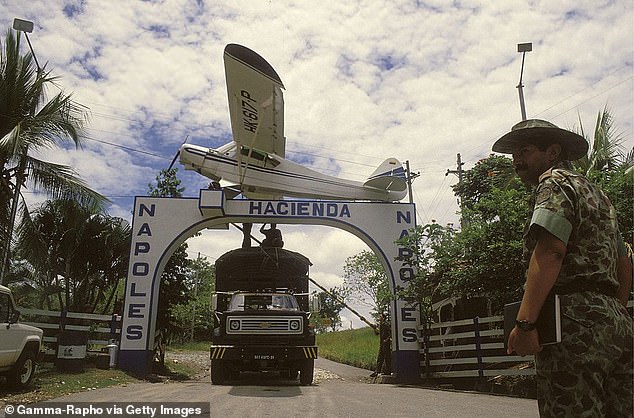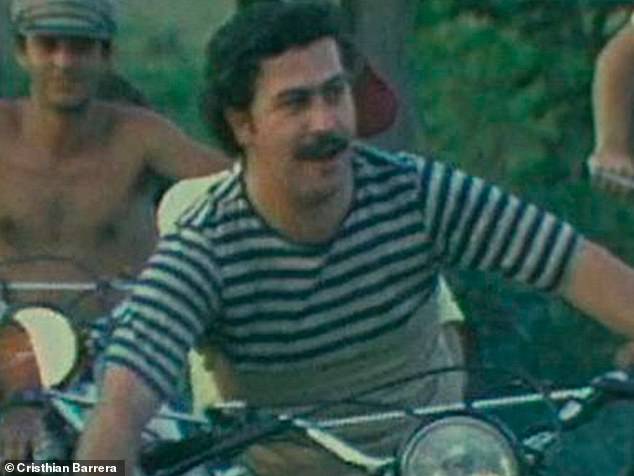Colombia begins sterilization of Pablo Escobar’s rogue ‘cocaine hippos’ as population of animals drug kingpin once owned as pets threatens to spiral out of control
Colombia this week began sterilizing its surprisingly large population of hippos, descendants of animals illegally brought to the country by drug lord Pablo Escobar in the 1980s, worth $10,000 each.
Two male hippos and one female underwent surgical sterilization, environmental authorities said. It is part of a larger government effort to control the population of 169 mammals that roam unattended in some rivers.
The plan includes the sterilization of 40 hippos per year, the transfer of some to other countries and possibly euthanasia.
The hippos, which spread from Escobar’s estate to nearby rivers where they thrived, have no natural predators in Colombia and have been declared an invasive species that could disrupt the ecosystem.
A group of hippos was brought in the 1980s to Hacienda Nápoles, Escobar’s 7,400-hectare private zoo that became a tourist attraction after his death in 1993. Most animals live freely in rivers and reproduce uncontrollably.
A Colombian government handout shows the $10,000 sterilization of a male hippopotamus in progress

Hippos float in a lagoon at Hacienda Napoles Park in November 2013. On Thursday, the Colombian government announced a plan aimed at controlling the population, which has grown to 169 and could grow to 1,000 by 2035 unless action is taken.

Pablo Escobar founded his own personal zoo at his Hacienda Napoles estate in the 1980s, when he went out and bought 1,900 exotic and wild animals from a zoo in Dallas. The collection included four hippos, which today have grown to 169
Sterilization takes time because spotting and catching the territorial, aggressive three-ton animals is complicated, David Echeverry López, head of the environmental agency responsible for the plan, said in a video distributed to the press.
Rain events in the area have complicated efforts to capture the animals. More grass means “they have an oversupply of food, so it becomes even more complicated to attract them to catch them,” Echeverry said.
The government estimates that there are 169 hippos in Colombia, mainly in the Magdalena River basin, and that there could be 1,000 of them by 2035 if no action is taken.
When the plan was first announced, the Environment Ministry said the procedure is expensive (each sterilization costs about $9,800) and poses risks to the hippopotamus, including allergic reactions to anesthesia or death, as well as risks to animal health staff.
Nataly Castblanco-Martínez, an ecologist at the University of Quintana Roo in Mexico and lead author of a 2021 group study, told AP at the time that the hippo crisis was “one of the biggest invasive species challenges in the world.” ‘
They suggested that some animals should be killed.
Experts have said that sterilizing hippos may not be enough to stop their growth. In March, the government announced a plan to transfer some of the animals to the Philippines, Mexico and India, where 60 would be shipped.
“We are working on the protocol for the export of the animals,” Mohammed said. “We are not going to export any animal unless there is permission from the environmental authority of the other country.”

Colombian soldiers stand at the entrance of Hacienda Napoles, the estate built by Pablo Escobar where his own personal zoo was once

Pablo Escobar became interested in having his own zoo on his estate after noticing the herd of exotic and wild animals that Medellín Cartel co-leaders Fabio Ochoa, Juan Ochoa and Jorge Ochoa had on their own estate.
Escobar founded his own zoo at Hacienda Napoles using his fortune from the transnational drug trafficking organization.
Local officials of Puerto Triunfo had halted his plans for a city zoo because there was already one in Medellín, according to the book “Pablo Escobar, My Father,” written by his only son Juan Pablo Escobar.
The feared drug lord was also interested in setting up his own zoo after noticing that colleagues and cartel leaders Fabio Ochoa, Juan Ochoa and Jorge Ochoa had a collection of exotic animals on their own estates.
So the Medellín cartel boss went out and bought a collection of 1,900 exotic and wild animals from a Dallas zoo for $2 million.
The capo was concerned that there was only one hippo – a male – and told an accomplice he needed more.
“You should buy a hippopotamus because Noah’s ark wobbles,” said Pablo Escobar. ‘Call Miami and ask if they can send me a woman on a plane now
The zoo’s hippopotamus collection grew to four, including three females.
Some animals were moved to zoos after Escobar’s death in 1993, while others fled and multiplied.
